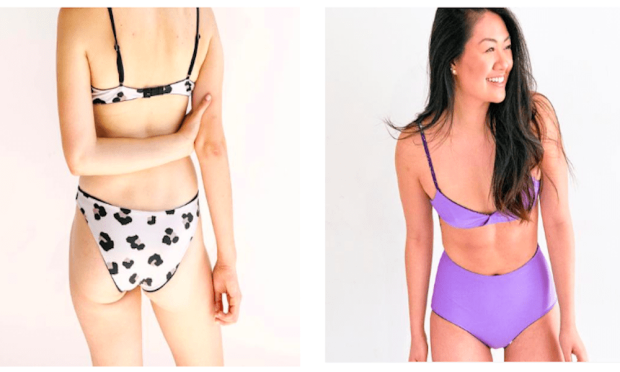Is Better Sizing The Secret To Swimwear Innovation?

While many of the retail innovators and entrepreneurs we talk to at PYMNTS found the inspiration for their business while trying to find a solution, Kitty and Vibe Founder and CEO Cameron Armstrong is one of the few who described being reduced to tears by the problem first.
The issue was a bikini bottom, and her lifelong struggle as a “chronically small and diaper-butted person” to find one that fit her properly. Actually fit, as in stayed on the way it was designed to as opposed to continually slipping off throughout the day because she didn’t have butt sufficient to fill it out. She eventually found one — just one — and proceeded to wear it “to rags.” After “a frustrating hour crying in a department store mirror in an attempt to find a new one,” Armstrong pulled herself together and realized something important.
Help was not coming. She was going to have to be the help.
She was not at the time a designer or a fashion industry insider and neither, by her own description, was she an expert on creating or selling bathing suits. This did not dissuade the then 25-year-old founder from quitting her job in operational marketing at L’Oreal and founding Kitty and Vibe as a one-woman show. A really one-woman show — as Armstrong started out as the sole investor, fashion designer, customer service representative, marketing professional and order fulfillment center for the entire company. Her Brooklyn apartment was the firm’s “warehouse.”
And while there is no shortage of direct-to-consumer (DTC) brands diving into the swimwear business offering all kinds of amazing, if ephemeral, advancements like superior aesthetic design, state-of-art-fabric construction and/or luxury products at middle income price points, Vibe and Kitty is unique in what it comes into the market with.
A new take on sizing.
The problem with bikini-bottom sizing, in Amstrong’s opinion, is that it is focused on a hip measurement, which doesn’t tell anyone how a swimsuit will fit over their own backside.
So Armstrong created her own patent-pending sizing metric in 2018 that takes a more holistic and “butt-based” approach to getting customers into the right garment.
“[Our] swimsuits are available in a revolutionary sizing system focused on inseam measurements and your booty size,” Armstrong told Teen Vogue. “We’ve thrown out the traditional sizing chart and in doing so, removed the boundary between too much fabric or too little for the perfect fit. Think of it as cup sizes for your butt.”
The measurement system, she noted, was designed by carrying around a little pink tape measure and getting measurements on anyone and everyone who would agree. What she saw was that the biggest differentiator among everybody was their version of a bikini inseam — “Literally your belly button through your legs to the top of your butt crack.”
From there she sought to design a sizing system that was shame-free and offered guidance for a range of measurements. And, most importantly, she designed it to be an online order, try on at home product, because the memory of crying it out in a dressing room made her realize bathing suit shopping is a unique experience in a customer’s life — and not usually a good one.
“A swimsuit is the most vulnerable piece of clothing you wear in public and I think from the moment you try it on, you need to feel comfortable and you need to feel in a safe space,” Armstrong said. “I think the first step was making sure it’s only available online so that you can try it on in the comfort of your own home. Then I really wanted to give the customer a tool to tap into a positive mental headspace.”
That tool is Spotify playlists called “vibes” with songs that reportedly inspired the bikinis and bathing suits they are paired with. When consumers look online, moreover, they get an accurate idea of what the suit looks like on the model. The photos are not retouched digitally and the size of suit one is buying changes the model one sees. If one is in the market for a 2XL swimsuit, they will see a size 22/24 model.
It is a different way to sell swimwear — and ultimately apparel in general — that Armstrong believe offers a better alternative to the uncertainty and insecurity built into the process now.